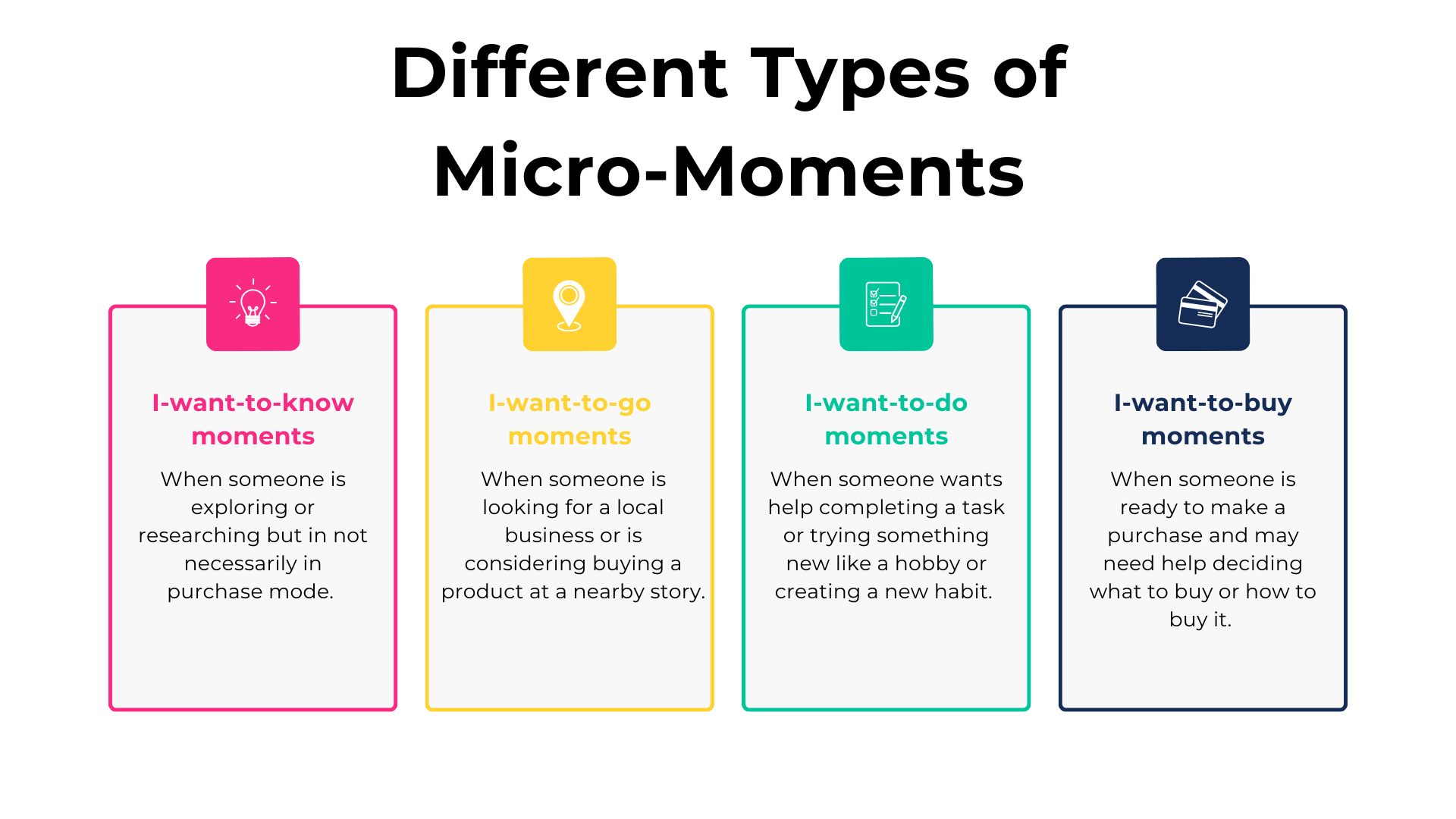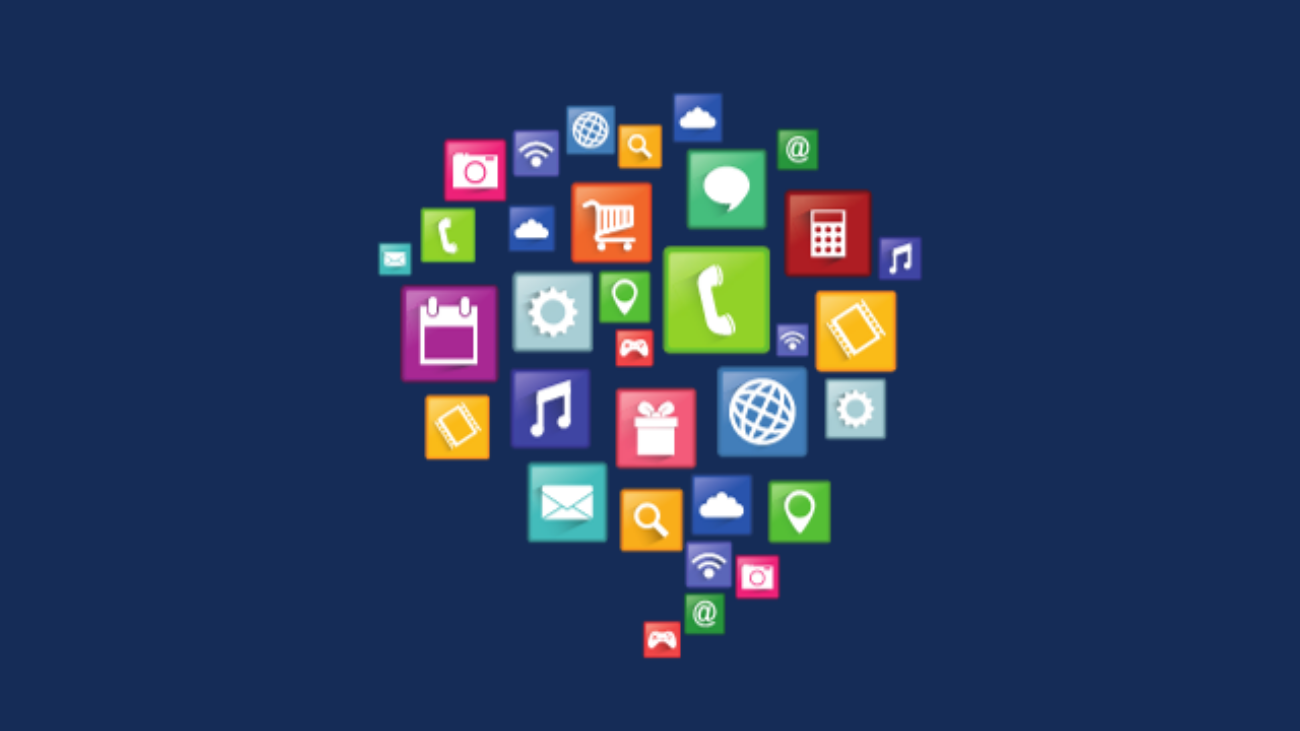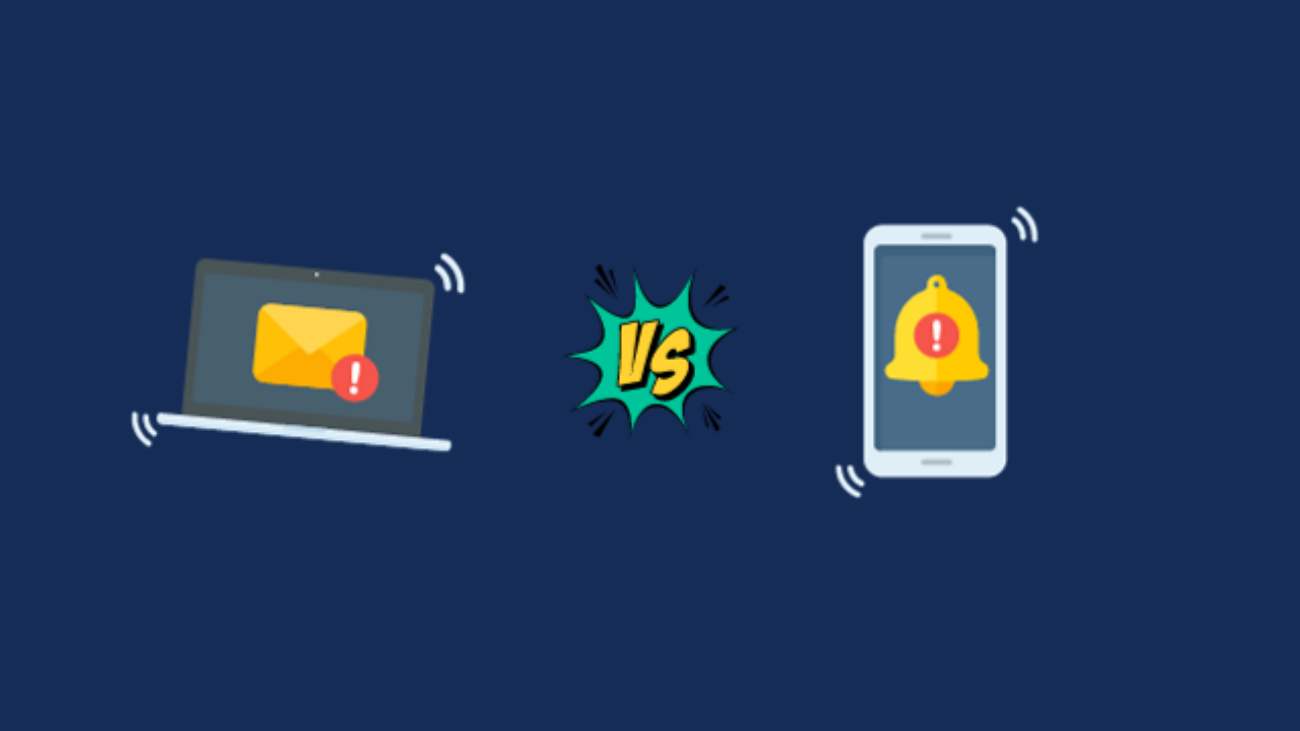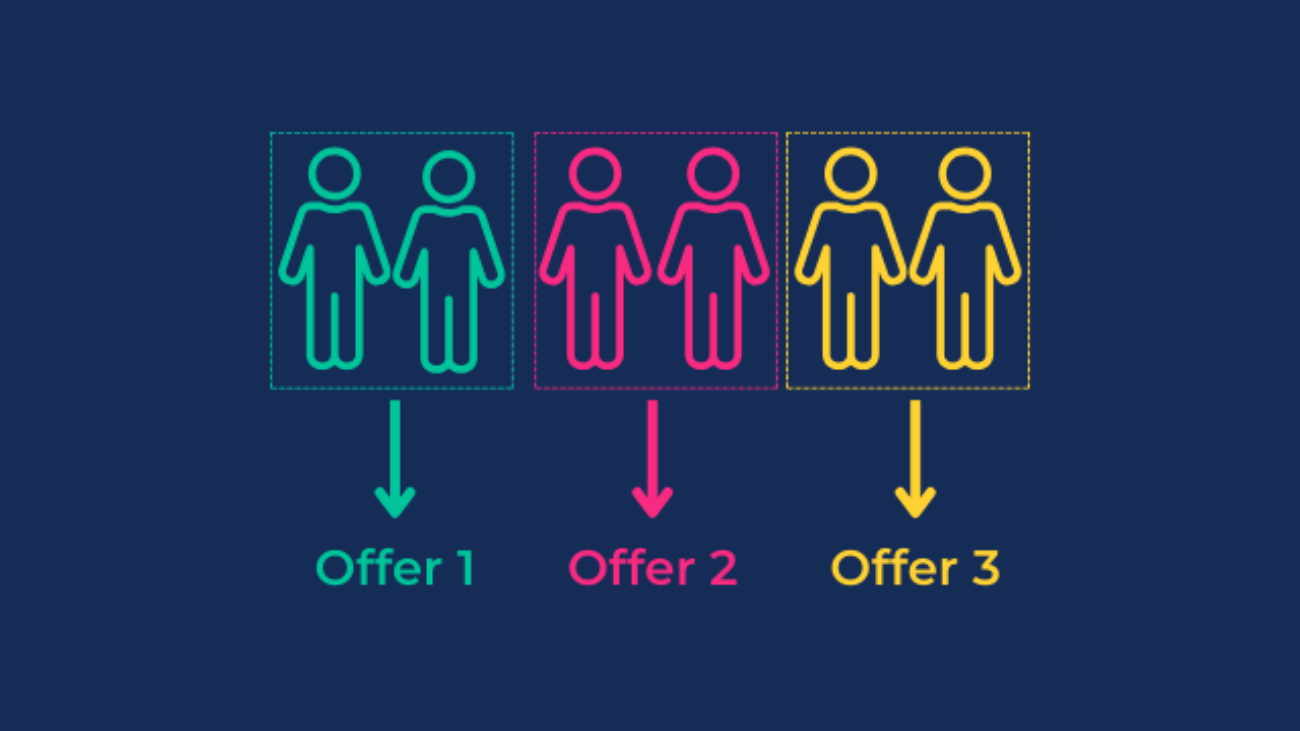Imagine you’re commuting home after a long day, and you suddenly realize you’ve forgotten to pick up ingredients for dinner. Without missing a beat, you pull out your smartphone, search for a quick recipe, locate a nearby grocery store, and even order a few ingredients for immediate pickup. This series of rapid decisions, fueled by immediate needs, epitomizes the power of micro-moments.
With real-time responses and digital interactions, consumers no longer follow a linear buying process. Instead, they seek immediate gratification and solutions based on instantaneous needs and desires. Micro-moments — transient windows in which brands sway consumer decisions for mere seconds – have emerged as a result of this evolving landscape. These moments, characterized by their spontaneity, present unique opportunities for brands to intervene with the right message at the right time.
Tapping into this dynamic requires a keen understanding of consumers’ real-time behaviors and preferences. By aligning brand offerings with these micro-moments, businesses can cater to immediate consumer needs, fostering loyalty and driving conversions. In essence, harnessing the power of micro-moments can propel a B2C brand’s growth trajectory, bridging the gap between spontaneous consumer desires and immediate brand solutions.
Building on that example, consider another scenario. As the chill of winter begins to fade, you’re lounging in a park, soaking in the sun’s warmth. Suddenly, the idea of a summer vacation strikes. You instantly grab your phone, start looking up potential destinations, reading reviews, and maybe even checking flight prices. Before you even realize it, you’re deep into the planning process, all sparked by that initial spontaneous thought. This is yet another instance of a micro-moment at play.
So, what exactly are these micro-moments?
Micro-moments emerge when consumers reflexively turn to a device, predominantly a smartphone, as a response to an instantaneous need or curiosity. They aren’t just confined to purchasing decisions. They encapsulate a spectrum of actions: “I want to know,” where a user might be looking up a fact or information; “I want to buy,” which can lead them down a purchasing rabbit hole; “I want to go,” guiding them to seek out locations or experiences; or even “I want to do,” pushing them to explore a new activity or hobby. These moments are fleeting but potent, representing pivotal junctures in the decision-making process.
These micro-moments have become integral in shaping the modern consumer journey. With the omnipresence of digital devices and the allure of immediate gratification, consumers are increasingly acting on these impromptu urges. For brands, recognizing and effectively responding to these moments can be the difference between a missed opportunity and a successfully converted customer.

The Significance of Micro-Moments
Instant Gratification
With today’s fast-moving society, patience is no longer a virtue consumers can afford. Every scroll, click, or tap on their devices is driven by a need for immediate answers. This urgency isn’t just confined to mundane day-to-day activities. Whether booking a last-minute vacation, making a spontaneous purchase, or seeking answers to burning questions, today’s consumers expect swift solutions. Brands that can provide instantaneous responses aren’t just addressing a need; they’re embedding themselves in a consumer’s psyche. By catering to this desire for immediacy, brands solidify their position as reliable, responsive, and in-tune with modern consumer needs.
Decision Inflection Points
Loyalty is fickle in the age of micro-moments. Long-standing brand commitments can waver when a consumer is faced with an array of choices, each promising a quicker or more relevant solution. During these brief windows, consumers are especially vulnerable to influence. They aren’t just looking for a product or service; they’re seeking the best and quickest answer to their immediate need. Brands that can pivot, adapt, and deliver in these crucial junctures stand to not only capture a sale but potentially convert a wandering consumer into a loyal customer.
Rising Mobile Dependency
It’s no revelation that smartphones have become extensions of ourselves. Their omnipresence has reshaped how we interact, shop, and decide. The pocket-sized devices are often the first point of contact for any query or need, a trend that’s only growing. This dependency on mobiles for real-time decisions is amplified when multitasking. Imagine a parent juggling work emails, while also researching recipes for dinner, and perhaps even sneaking in a quick online purchase. This multitasking culture, empowered by mobile devices, has cemented the role of micro-moments in shaping consumer decisions. Brands that recognize this and optimize their strategies for mobile responsiveness position themselves at the forefront of consumer choices.
In delving deeper into the significance of micro-moments, it becomes evident that they aren’t merely fleeting trends but foundational shifts in consumer behavior. For brands, understanding and capitalizing on these shifts is more than a strategy; it’s a necessity for modern success.
Verticals that learned how to leverage these moments
Across industries, leading brands are recognizing the value of micro-moments and are innovatively weaving them into their marketing and operational strategies. Their success stories provide tangible evidence of the power of these fleeting yet influential moments.
Fast-Food Chains and Geo-Targeting: Consider global fast-food giants. They’ve long realized that hunger can strike anytime, anywhere. Leveraging this, many such brands utilize geo-targeting techniques. When a consumer is in proximity to one of their outlets, they are strategically served tempting advertisements or special offers. This brilliantly taps into the spontaneous “I want to eat” moment, converting a passing craving into a purchase.
E-commerce and Swift Checkouts: E-commerce platforms, on the other hand, have understood the urgency consumers feel when they stumble upon a must-have product. Recognizing the “I want to buy” impulse, platforms have optimized their mobile apps and websites for frictionless checkouts. Features like one-click purchases, instant payment verifications, and streamlined cart processes ensure that consumers can act on their buying impulses without hindrance. The result? Elevated sales and bolstered customer loyalty.
Travel Platforms and Last-Minute Deals: Expanding the scope further, many travel platforms have also harnessed the power of micro-moments. Recognizing the “I want to go” feeling, they offer last-minute deals or flash sales. For the spontaneous traveler looking to book a quick getaway, these tailored offers can be irresistible, leading to on-the-spot bookings.
By astutely recognizing, anticipating, and acting upon these micro-moments, these brands have not only met consumer needs but have also crafted memorable experiences. In doing so, they’ve set a benchmark for how businesses can integrate micro-moments into their strategies, driving engagement, and amplifying conversions.
Challenges and Starting Points in Harnessing Micro-Moments
The allure of micro-moments is undeniable, offering brands an innovative avenue to connect with their consumers. However, as with any groundbreaking strategy, there are intricacies and challenges to navigate.
One of the primary hurdles is the unpredictability associated with predicting moments. While the essence of micro-moments is their spontaneous nature, brands still strive to anticipate them, aiming to be present right when the consumer feels the need. But identifying when and where these moments occur isn’t a straightforward task. It demands a deep dive into comprehensive data analysis, complemented by an intricate understanding of evolving consumer behavior patterns.
Equally crucial is the challenge of content relevance. Merely being present during a micro-moment doesn’t automatically translate to engagement or conversion. For a brand to genuinely resonate during these fleeting opportunities, the content presented has to be impeccably tailored. It must align seamlessly with the user’s immediate requirement, ensuring that the brand isn’t just seen, but also considered and chosen.
Lastly, the pressing demand for speed and efficiency cannot be overstated. In the digital age, consumers are accustomed to instantaneity. A momentary delay, a slow-loading page, or a glitchy interface can swiftly deter a potential customer. Hence, brands face the imperative task of rigorously ensuring that their digital interfaces, be it websites or mobile apps, are optimized not just for functionality, but also for blistering speed.
In essence, while the world of micro-moments is brimming with potential, successfully tapping into it demands a blend of foresight, precision, and agility from brands.
Implementing Micro-Moments in B2C Strategy
To fully harness the power of micro-moments, brands need to adopt a multi-faceted approach:
Consumer Research
Embark on a comprehensive exploration of your audience. Dive into their habits, preferences, and challenges. Use analytics tools to dissect typical customer journeys, pinpointing potential micro-moments.
Optimize Digital Touchpoints
Your online platforms, be it mobile apps or websites, are the arenas for micro-moments. They should offer quick, intuitive, and seamless experiences, especially during those short, decisive consumer interactions.
Real-Time Responsiveness
Given the fleeting nature of micro-moments, brands must be equipped to react instantaneously. Utilize real-time data, and automated tools when feasible, to recognize and address these moments as they unfold.
Segmentation Mastery
Understanding your audience isn’t enough. Segment them based on specific behaviors, needs, or patterns. This allows for more targeted and effective engagement during micro-moments. To delve deeper into the importance and future of segmentation, check out our post on The Evolution and Future of Customer Segmentation.
Tailored Content
Specificity is key during micro-moments. Craft content that aligns precisely with potential needs during these instances, be it concise blog posts, how-to videos, or timely promotions that command attention.
Collaborate and Experiment
Encourage a culture of innovation and adaptability. Team up with departments across marketing, sales, and tech to ideate, test, and refine strategies. Embrace feedback and iterate continuously, ensuring your approach remains relevant and efficient.
Micro-moments matter
The digital realm is all about timing, precision, and agility. While foundational marketing strategies provide a solid base, it’s the nimble maneuvers around micro-moments that define modern commerce. For B2C brands, mastering these moments is more than a strategy; it’s a rhythmic dance with the consumer, choreographed in real-time, ensuring they remain at the forefront of the evolving market landscape.





